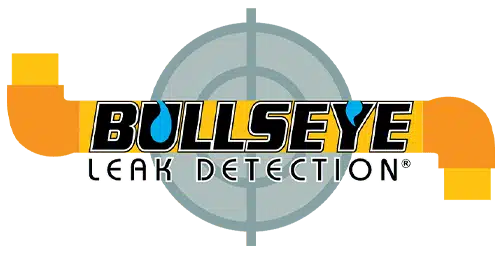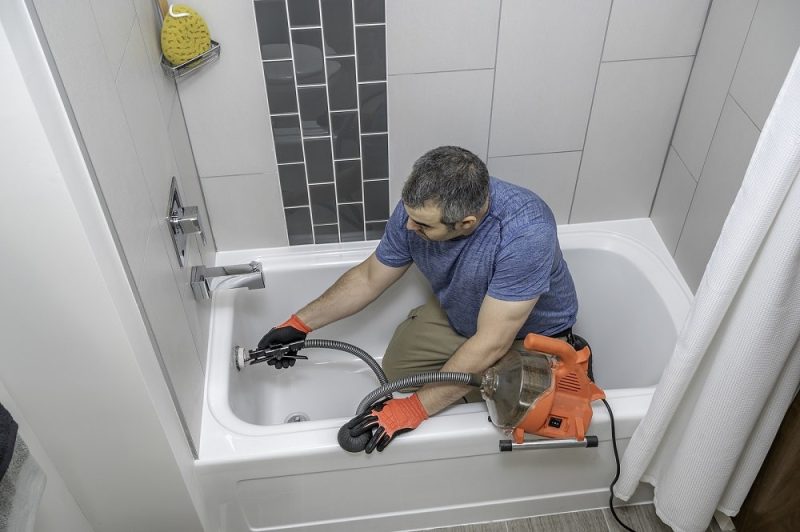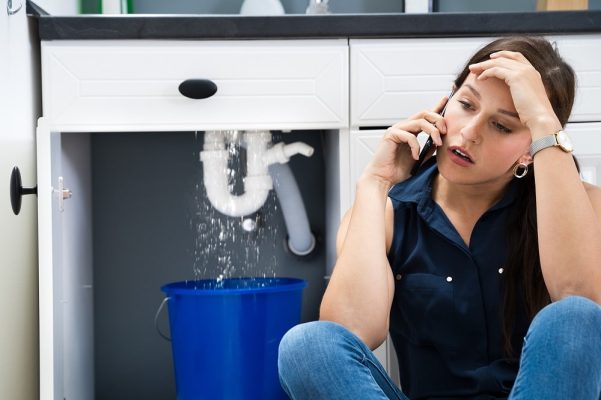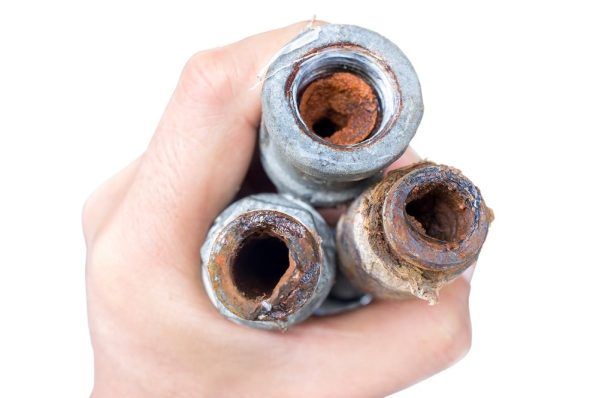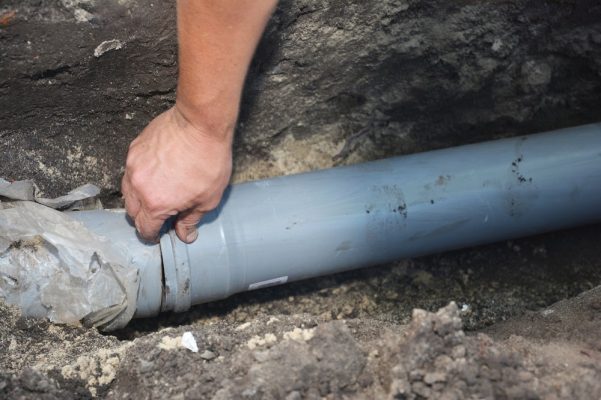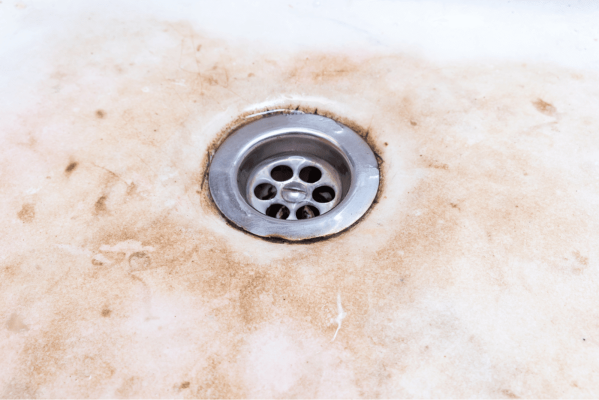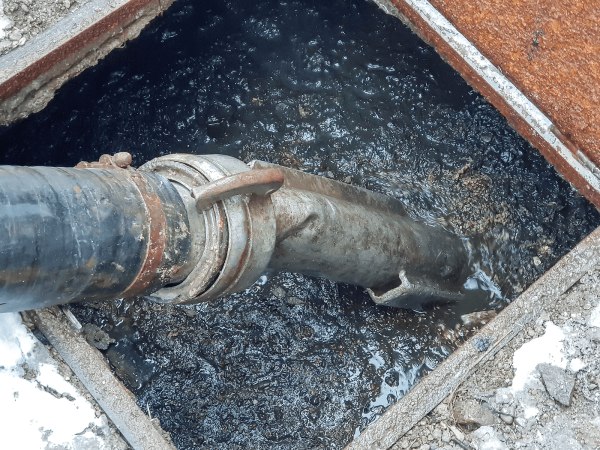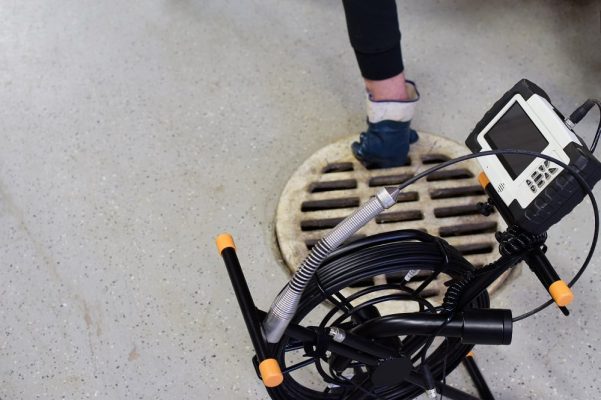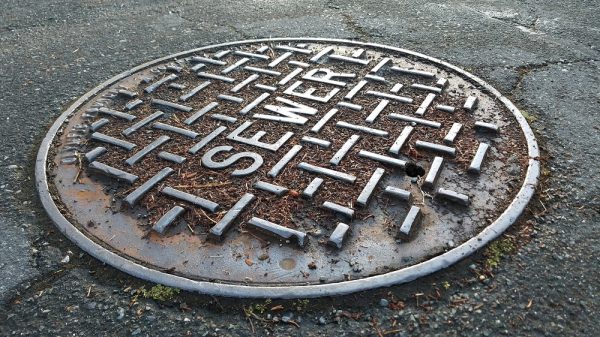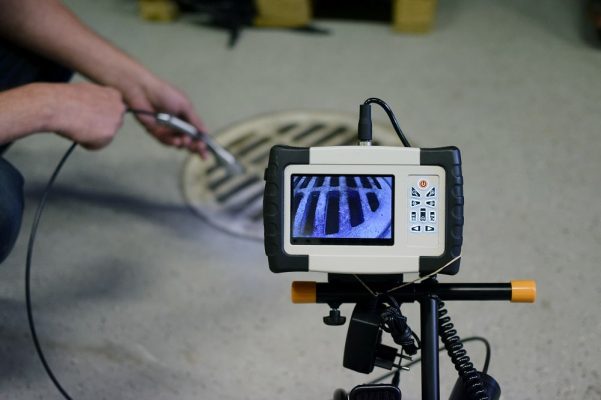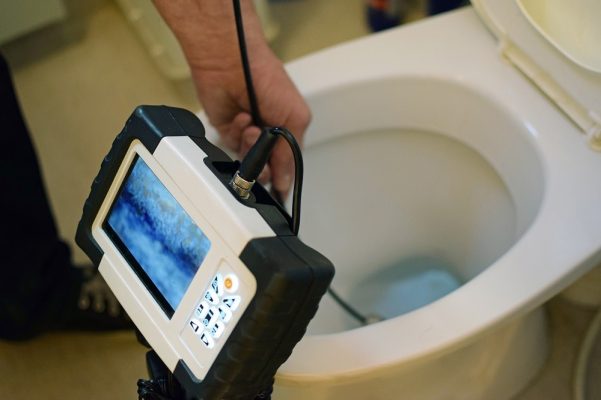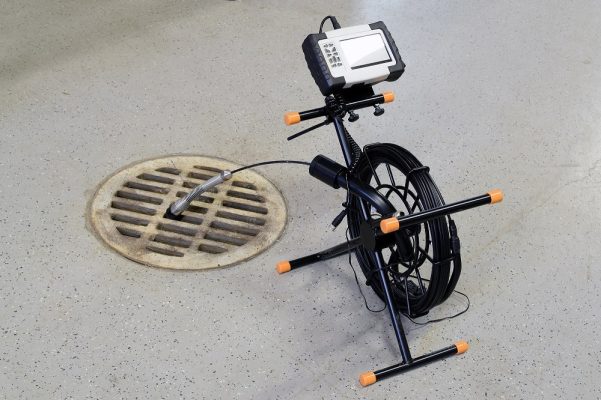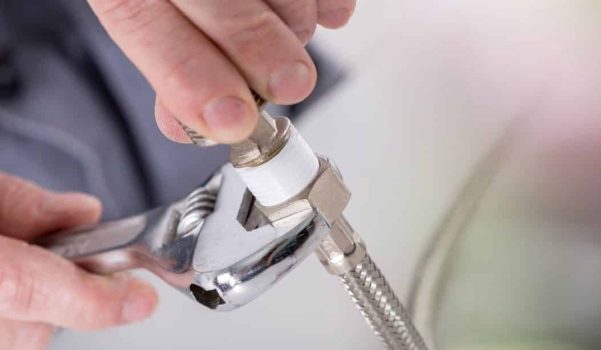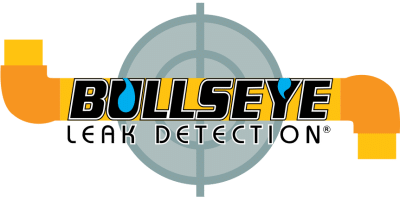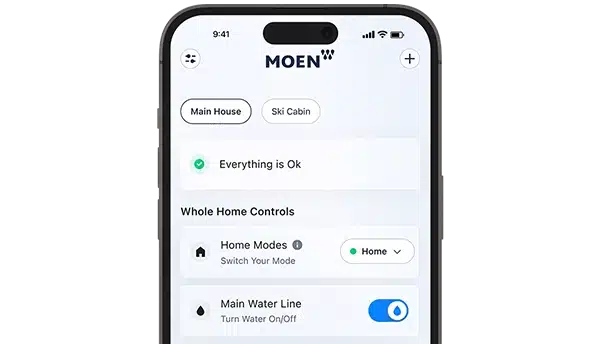Issues in your main sewer line can lead to a number of different plumbing issues inside your home—and that’s part of the reason they can be so hard to diagnose properly. You might think you’re treating the problem by clearing that drain or snaking that pipe, but you’re really just treating one of the symptoms of a sewer line blockage. So how do you know if you just have a clogged drain or if you need sewer line repair in Sacramento?
main signs of main sewer line blockage
Frequent Clogs and Slow Drains
Yes, every drain is going to clog sometimes. But if all of the drains in your home are clogging on a regular basis, then that’s more than just an unfortunate coincidence—it’s an indication of a bigger problem. The odds are high that there’s a blockage somewhere in your sewer line. If your toilets, tubs, and sinks keep getting clogged no matter how much you plunge or snake those pipes, it may be time to look for professional help.
Water Backup in Tubs and Showers
Water backups in your bathtub or shower are different from a clog or a slow drain. We’re talking about your tub being empty, then water rising back up into it from the drain. This would typically happen when you flush a nearby toilet. But flushing water down one bathroom fixture should never push water back up into another. This is a sign of a sewer line problem that needs to be fixed by a professional.
Gurgling Toilet
Toilets will make gurgling sounds sometimes, and that’s usually fine. What you want to be on the lookout for is a toilet that starts talking to you the moment you turn on the sink. This is similar to the issue described above; as water goes down one drain, it’s forcing water and air to move into another drain pipe instead of everything moving down into the sewer line as it should.
Water Backup when Doing Laundry
You may be noticing a pattern here: The main sign of a sewer line issue is that one or more drains will overflow when water is sent down another drain. In the case of your washing machine, it’s pumping out a lot of water at once, so more often than not, you’ll see some major water backups in your sinks or toilets while doing laundry. When your washing machine starts draining, keep an eye on the drains in your bathroom to see if water is pushing back up into them. If the blockage is bad enough, it could even make your toilet overflow.
Foul Smell from Drains
We know bathrooms are always the most pleasant-smelling rooms in the house. But the drains in your tub and sink—and yes, even your toilet—shouldn’t be giving off a constant, sewer-like smell. If you notice a foul odor coming from more than one drain in your home, it’s likely because sewage isn’t being pushed away down the sewer line as it should be.
Backup at the Sewer Cleanout
Your sewer cleanout likely isn’t something you check too often. You may not even know where it is. Your cleanout is typically located in the basement or outside your home and is marked by a round or rectangular threaded cap. If sewage is seeping from the clean out, or if there is standing water inside of the pipe, the clog is in the sewage line between that pipe and the street. If you don’t notice this issue, you could still have a sewage line blockage, but it will be in the line between that pipe and your home instead.
If you’re having consistent issues with clogs, water backups, and foul smells, contact Bullseye Leak Detection for sewer line repair in Sacramento.
Importance of Sewer Line Repair
Issues with your sewer line aren’t always big, dramatic problems, and you won’t necessarily have sludge seeping up through your drains or collecting in puddles on your lawn. Like any plumbing problem, sewer line issues come in a range of severity, and the more minor ones are more likely to be ignored. However, when it comes to sewer line repair in Sacramento, even little repairs shouldn’t be put off. Keep reading to learn why it’s so important to get your sewer line issues fixed quickly.
Prevent the Issue from Getting Worse
When it comes to your plumbing, there’s pretty much one rule that always holds: If you ignore the problem, it will get worse. A small leak gets bigger, a corroding pipe becomes a burst pipe, and sewer line clog becomes a significant blockage. If you ignore your slow drains and the other signs of a sewer line clog, the backup will only get worse with time and could get to the point that water doesn’t flow through the pipe at all anymore.
It could lead to those big, dramatic problems we talked about earlier—sewage backing up through all your drains, burst sewage pipes that create puddles of filth in your yard, and so on. You shouldn’t wait for the issue to get this serious because it will only end up costing you a lot more in repairs, as well as creating a host of other potential problems.
Protect Your Family’s Health
One potential problem that comes from letting the problem get worse is endangering your family’s health. Sewage is full of bacteria and other harmful toxins that make you and your loved ones very sick. Any exposure to raw sewage is a significant health hazard and should always be taken seriously, even if it seems relatively “minor” to you.
For example, you might think that one drain becoming backed up with sewage is a small problem you can fix yourself. However, it’s more likely a sign of a bigger problem, which should be handled professionally to help keep it happening again and again.
Protect Your Landscaping
If a sewage pipe gets to the point that it bursts somewhere on your property, you’ll likely spot the location of the break, thanks to the filthy, smelly puddle of waste in your yard. Not only is that a serious health hazard, as mentioned above, but it’s not easy to clean up either. The odds are that the landscaping area will need repairs and any surrounding areas impacted by the toxic waste.
Not only is this an extra cost, but it’s a major hassle—especially if you love your landscaping the way it is. If you’re not looking to remodel your yard any time soon, don’t let your sewage problems get this bad. And if you are looking to remodel your backyard, you don’t need to cover it in sewage to have a reason to do that.
Keep Your Home Smelling Clean
When the clog in your sewer line is relatively small, you probably won’t have the sewage itself backing up into your home—just the smell. Of course, the smell of sewage isn’t exactly something you want in your home either.
If you’re noticing a persistent, disgusting smell coming from your drains, it’s probably not because of something your family ate. Likely, a clog that isn’t allowing all of the sewage to drain out of the pipes. The sewage sits in your pipes, and the fumes it creates waft back up into your home. It’s certainly not pleasant, and the best way to fix it is to get that clog taken care of right away.
Extends Service Life
The average homeowner doesn’t think about the sewer as having a service life, but your sewer simply won’t last forever without maintenance and remediation. Because it’s buried in the ground, it must endure constant moisture, tangling tree roots, and pressure from surface activities. Given the propensity of minor problems to become major issues if left unattended, it’s easy to see how failure to maintain your system’s health can cut its service life short. The best way to extend the life of your sewer system and postpone massive renovation projects is by routinely inspecting your sewer system and making repairs when problems are discovered. This proactive approach will pay dividends in a longer sewer system lifespan and postponement of costly renovations.
Prevents Unexpected Stoppages
A minor sewer line problem may not seem like a big deal so long as the drain is still open and flowing. However, a small issue can blossom into a full-fledged emergency that can derail your plans, lead to lost time at work, and cause massive inconvenience to you and your family. When your drain system ceases to function, your household effectively grinds to a halt. In fact, without the sanitary sewer, your home almost immediately becomes unlivable. You can prevent such dire effects of unresolved drain issues by making sewer repairs in a timely fashion.
Saves You Money Long-Term
Sewer problems, once they arise, don’t simply fade away. In fact, such issues often compound as time passes, creating the need for more extensive repairs that will push the cost up. For example, a simple sewer line crack or breakage may seem benign enough at first. However, once damaged, that sewage line can be infiltrated by tree roots seeking moisture. That can result in a clogged drain that will need extensive remediation to repair. Ignoring minor sewer repairs can lead to long-term costs, so it’s better to be proactive and attend to repairs as soon as they are discovered.
Identifying the Symptoms of Sewer Line Break
Your sewer line carries wastewater from your home to your municipality’s sewage treatment facility. A problem with this line can cause costly and unpleasant problems for your home. Trust the expert water leak detectors in Sacramento when we say that you do not want to experience the aftermath of an undetected sewer line leak.
Symptoms of a Sewer Leak
To protect yourself and your home from the unspeakable, watch for the following 10 signs of a possible leak:
- Bad smell. Inexplicable foul odors emanating from drains and toilets often indicate trouble with the line.
- Multiple backups. Blockages and backups are not uncommon and are usually not a cause for concern. However, if you are having problems with multiple drains and fixtures, that may be a sign of a problem with your sewer line.
- Slow drains. If clearing a clog doesn’t improve the function of your drain, the problem may be farther down in the sewer line.
- Gurgling toilets. Toilets should never gurgle. Gurgling happens when trapped air is released and air gets trapped when sewer lines are clogged and filled with water.
- Fluctuating water levels in toilets. High water one day and low water the next are symptoms of trouble with the sewer line.
- Mold growth. Wastewater will wick though concrete, carpets, and drywall and create places where mold loves to grow. Spots of black mold, especially in locations nearest your lowest drains, are a sure sign of a leak.
- Sinking and cracks. A break in your sewer line causes unusual erosion in the ground surrounding the break. When this happens, the ground will start to sink. Depending upon the location of the break, you may see sinkholes in your yard, cracks in your driveway, uneven pavers, or even cracks in your foundation.
- Thriving plants. Your wastewater contains lots of nutrients that plants love. If you’ve got a spot of extra green grass, that might just mark the spot of a sewer line leak.
- Soggy spots. In the absence of rain or watering, if your yard has any perpetually soggy areas, you may have a leak underground.
- Pests. Cracks in your sewer pipes create openings that mice, rats, and insects can use to access your home. Unusual pest activity could be a sign of bigger problems.
Don’t Sit on Sewer Problems
Letting a sewer line problem go unchecked may result in major damage to your home. If you’re experiencing one or more of the above plumbing problems, don’t hesitate to call Bullseye Leak Detection. Our team of plumbing professionals has the tools and experience to pinpoint the exact location of the break. Why is that important? Because jackhammered floors, demolished cabinetry, and torn up landscaping are expensive; before you tear up your home or property, you need to be 100% certain that you’re working in the right spot. Sewer line repairs are never easy, but finding the leak limits the damage to your property.
How Often Should You Have Your Drain and Sewer Line Cleaned?
Plumbing repairs are something no homeowner enjoys dealing with. When your shower water starts to pool around your ankles or your sink starts to fill up with the drain open, you probably cringe at the thought of what you’re going to have to do. Cleaning out those drains is, quite frankly, disgusting—we get it. Unfortunately, it’s also necessary to keep the water draining freely. But what about your sewer line? Those need to be cleaned regularly too, and that’s a dirty job you can’t do yourself. Keep reading to learn how often your sewer line should be cleaned. And if you need someone to do the job for you, contact our plumbing company in Sacramento.
Regular Preventative Cleanings
It’s a good idea to have your sewer lines cleaned every 18 to 22 months in terms of maintenance. This will help to deal with any obstructions and other issues before they become significant problems. Without regular cleaning and inspection, roots can grow into your sewer line; leaks can develop, and obstructions and grow without interference. All of these can be dealt with quickly and easily if you’re having the line inspected regularly. But if you ignore your sewer line until there’s a problem, it’s much more likely that you’ll be dealing with actual damage to the line, which will require repair or even replacement.
Signs It Needs Cleaning
If it’s been a while since you’ve had your sewer line cleaned and inspected, it’s probably a good idea to contact a plumber, regardless of whether or not everything is still running smoothly. However, in some cases, sewer lines can develop issues in a shorter period. This is most often caused by flushing objects down the toilet that wasn’t meant to enter the sewer line. If you’re noticing any of the following problems, get your sewer line cleaned:
- Sewage backing up into your drains, toilets, or tubs.
- Gurgling sounds from your pipes.
- Puddles of water around the basement floor drain.
- Frequent clogging or multiple clogged drains.
- Slow drains.
- Foul, sewage-like odors around your property.
While some of these signs can sometimes point to other plumbing issues, they all merit inspection by a professional.
More Frequent Sewage Issues
Let’s say you’re great at ensuring your sewer lines are cleaned every couple of years, yet you’re still developing issues like the ones described above in between each cleaning. It’s essential to inform your plumber of this, as it likely indicates a bigger problem. Frequent issues with your sewer line usually are caused by tree roots growing into the underground pipe or a large obstruction in the main sewage line.
While regular cleanings can temporarily clear these problems away, tree roots will grow back if not dealt with appropriately; and obstructions caused by a bellied (or sagging) pipe or grease accumulation will keep coming back. These issues need to be dealt with more thoroughly to prevent recurring sewer line trouble. So, if you keep having the problems outlined above, despite regular cleanings, talk to your plumber. They can diagnose the problem using video technology so you can deal with it more permanently.
What You Should Expect from Sewer Video Inspection
Plumbing problems are much easier to diagnose with the use of video technology. This is especially true with sewer problems because a video inspection can positively identify the cause of a backup and help the plumber determine how to properly address the problem rather than just snaking the line and waiting for the problem to resurface later. Here’s what you need to know about how a sewer video inspection in Sacramento works and what you can expect from the process.
How the Camera Works
The sewer camera is a great way to see inside the pipe without digging up the yard or making guesses as to what the problem is. A small, flexible camera is attached to a cable similar to a pipe snake that’s fed through the sewer pipe. The cable is fed through the cleanout of the home, which is usually near the foundation where the sewer pipe leaves the house or on the main stack where the pipe comes down from the floor above. The footage can be watched in real time, but it’s also recorded so that you and the plumber can view it later. Along with the footage, a radio transmitter on the camera records the physical location of the camera so that the plumber knows exactly the depth and location in the line to identify where the problem is. This makes repairs more accurate without making as much of a mess should digging up the line be required.
When to Use a Camera
The most common reason plumbers are asked to do a video sewer inspection is if there are problems like a blockage that can’t be cleared, or the blockages are recurring. If the water is draining slowly or there’s a gas odor, it’s a good idea to have an inspection as well. It’s also beneficial to get a camera inspection before purchasing a home because there can be problems with a sewer line that are impossible to detect. An inspection can see construction defects that may need to be repaired before closing the sale. If you’re planning a remodel, a sewer video inspection can provide valuable information as well.
What to Expect during the Inspection
The plumber should be able to quickly locate the cleanout to begin the inspection. In some cases, the plumber may need to use different access points in order to get a full picture of the problem area. You can help this process go more smoothly by keeping pets and children out of the area and moving any furniture or other items from the area. The entire inspection is usually done in an hour or two, depending on how easily the camera and cable can get through the line.
Problems a Camera Identifies
A video inspection can identify infiltrations from tree roots into the sewer line. It can also identify cracks or breaks in the lines and locate damaged areas. Major blockages and potentially the materials you’re flushing that are creating the blockage can also be seen. A sagging section or “belly” in the sewer line can also be seen on video inspections.
Using Footage for Repair Options
Video inspections provide accurate options for sewer repair in Sacramento. You may need portions of the pipe repaired or replaced, but the plumber will show footage and provide a written report to show evidence of suggested repairs. To schedule your inspection, contact Bullseye Leak Detection, Inc., today.
Sewer Video Inspection: How Does It Work?
Your drainage system is one of the critical parts of the home that needs constant and proper maintenance. Even if it seems to run smoothly, you still need to make sure it’s free of potential concerns. Many homeowners dismiss plumbing problems as just an annoying inconvenience, but they can cause a significant issue if they’re overlooked. Luckily, you can get a sewer video inspection in Sacramento to help resolve them. Read on to learn more about what it is and how it works.
What Is It?
This process uses modern digital imaging technology to keep residential or commercial sewer systems in perfect condition. It finds the issues in advance so plumbers can promptly fix them. It’s also helpful in determining complications and recurring problems, particularly in buildings with complex pipeline structures.
A video inspection is performed with the help of a high-resolution camera connected to a fiber optic scope and a rod that can be bent and maneuvered in the pipes. An LED light is attached to the end, providing illumination for the user. This allows for the quick and easy detection of any damage or obstruction without taking the system apart. It also lets you anticipate possible issues. Everything is waterproof, so even the toughest jobs are possible.
An inspection is a valuable tool for checking and maintaining your drainage system. It can help pinpoint damaged areas by providing plumbers with an accurate picture of the pipework. It can also cover a lot of ground since the cables can extend up to the sewer main.
How Does It Work?
A plumber will insert the fiber optic line and camera in a pipe with a diameter of 2 to 36 inches. It’s then pushed forward until the issue is spotted using a red LED bulb. The plumber will be able to see everything inside through a monitor aboveground.
The entire tool is fitted with a simple radio transmitter attached to the main device. It records data, documenting the physical location and depth of each part of the inspection. This lets plumbers stop the rod when there are blockages. They’ll then look for those points aboveground and mark them. After they’re identified, the professionals can better resolve the problem.
This is helpful for repairs and maintenance checkups because sewer repair contractors can eliminate guesswork.
What Can It Detect?
A video inspection can help you in many ways. Aside from being used to look for structural flaws, holes, and obstructions, it can accurately determine the following:
- Grease buildup
- Corrosion
- Root intrusions
- Non-detectable storm and sanitary laterals
- Conformity of plumbing conditions to current regulations
What Can’t It Detect?
It might seem surprising to many, but a video inspection can’t detect leaks. The camera is inside the pipes, so the plumbers won’t be able to see if water is escaping. Also, sewers are filled with gunk, making cracks harder to spot on a monitor.
In addition, pipes are made with either PVC or cast iron, which are both robust materials. Any imperfections that resemble cracks may not necessarily be damaged areas. They may just be surface flaws that don’t go all the way through because of the thickness of the component.
5 Main Benefits of Sewer Video Inspection
Your sewer system works flawlessly much of the time. However, when problems occur, it can be challenging to get to the bottom of the issue. Given the importance of your sewer system to your day to day life, a break in service caused by any number of problems can create an inconvenient circumstance for you and your family. While it may be hard to locate the root of your sewer issue given the invisibility of large stretches of your sewer line, there is a tool that can be used to shine a light on your underground problems and give you the ability to see inside troublesome sewer pipes.
Sewer video inspection in Sacramento has changed the way plumbing problems are diagnosed by giving professionals and homeowners alike the ability to see what goes on in the dark confines of your sewer system. This visibility helps diagnoses sewer breaks and blockages, which can result in a speedier resolution and less time probing in the dark for the nature of the problem. Providers of the best sewer video inspection in Sacramento can help you identify the problem, get it corrected, and bring your system back online before it needlessly disrupts your life. Keep reading to learn 5 benefits of sewer video inspection.
Determine Pipe Condition
One of the primary benefits of sewer video inspection, particularly when a significant problem does not warrant the cause for inspection, is that it can help you assess the condition of your sewer pipes. If you have an old terracotta pipe, you may not even know that a sudden collapse could be imminent. Also if you have more modern PVC sewer plumbing, a video inspection can help highlight trouble spots that may eventually be problematic, such as sharp bends in the lines where debris accumulates or weak spots where adjacent tree roots have pushed through the joints of your sewer pipes. This is valuable information since it allows you to tend to problems proactively rather than reactively repairing things when they break down.
Quickly Locate a Break
If there is a problem with your system, a video inspection can help immediately pinpoint the area of the leak and determine what factors may have caused it. For example, tree roots are aggressive in some seasons, as they will seek moisture and can break through weak areas in your sewer lines to get it. Video inspection can help you find the source of the leak in a short time while also providing you with valuable information about the nature of the leak and its cause so that you can be prepared when the leak is uncovered for repair.
Eliminates the Guesswork
When you experience a sewer leak, unless you see signs like pooling wastewater, you may be in for the arduous task of manually locating the problem. That could mean digging up the entire sewer line in search of a break, which is time-consuming and back-breaking. Video inspection can save you that trouble by making quick work of leak diagnosis. That can save you time if you’re looking for the leak yourself, or money if you’re paying someone else to do it.
Cost-Effective
Because of the rapid speed with which leaks can be discovered using video inspection compared to digging up the line, it can save you money to hire a video inspection firm. The turnaround time will be much shorter when video inspection is involved, and when you are paying plumbers by the hour, time is critically important to keep your cost down.
Prevents Secondary Damage
When you must manually locate a sewer leak, it may require you to tear out drywall or dig up your garden plantings and hardscaping to expose the sewer line. However, none of that is necessary when you use video sewer inspection. The camera can easily snake through the drain and locate the leak, which prevents extensive secondary damage that can cost almost as much to repair as the sewer leak itself.
Saving Time and Money with Drain Video Inspection
An unknown leak in your residential plumbing system can quickly become the bane of your existence. You may be able to detect the signs of a leak and still not be able to find it, preventing a quick fix and setting you up for a frustrating hunt for the problem. When your home plumbing system has sprung a leak, it’s imperative that you find the problem and make a repair as quickly as possible, not just in the name of convenience, but to prevent potential health and environmental consequences.
While plumbers have many tools in their leak-finding tool chest, few are simpler and more effective than sewer video inspection. The best video sewer video inspection professionals can use video and sound to quickly locate any leaks and potential trouble spots in your sewage system, speeding repair and saving you money in the process. If you fear that you may have experienced damage to your sewage system, sewer video inspection in Sacramento can help you quickly bring the situation to a resolution. Keep reading to learn how video sewer inspection can save you both time and money.
Benefits of Seeing from the Inside
If you’ve ever experienced a sewer line issue, you know that finding the problem can quickly turn into an all-encompassing, full-time task. Your sewer lines are buried in the earth, which means visually inspecting them for damage involves exposing them through trenching. You could rent a trencher to do the manual labor for you, but that can be costly and inconvenient, especially if you’ve never used a trencher before. Or, you could do it the old-fashioned way with the point of a shovel by digging up the entire sewer line from the house to the main beneath the roadway. That represents back-breaking work and can take days to accomplish. Video sewer inspection simplifies the process exponentially. There’s no need for digging, as inspection professionals simply insert the video lead into your system and navigate it in search of trouble spots. Work that would have taken days of manual labor can be accomplished in mere moments, thus saving you a tremendous amount of time and effort.
Reduces Labor Costs
Without video equipment, finding a sewer leak can be challenging even for seasoned professional plumbers. If you hire a plumber to find and repair your leak, that plumber will still have to do the same thing you would have to do to locate the leak by digging up the line. That can result in an exorbitant cost in terms of labor, since the plumber would spend hours digging and searching for the leak. Video inspection provides a simple solution that leads to lower labor costs and a much quicker timeline for resolution of the problem.
Provide a Map of Your Entire System
When you get a video drain inspection, you get more than just a simple and quick fix to your existing problem. Many providers of video sewer inspection will also provide you with sewer mapping services, which can be a great tool for diagnosing future issues or planning upcoming projects. By mapping your entire sewer system, you can get a detailed diagram of factors such as depth of your system, size of drain lines, potential trouble spots, and the path of your system. Some providers even add voiceovers and on-screen notes to the inspection footage to help provide additional details that can be helpful in future projects. Once the inspection is completed, you’ll usually receive a thumb drive containing the annotated footage for use whenever it is needed in the future.
